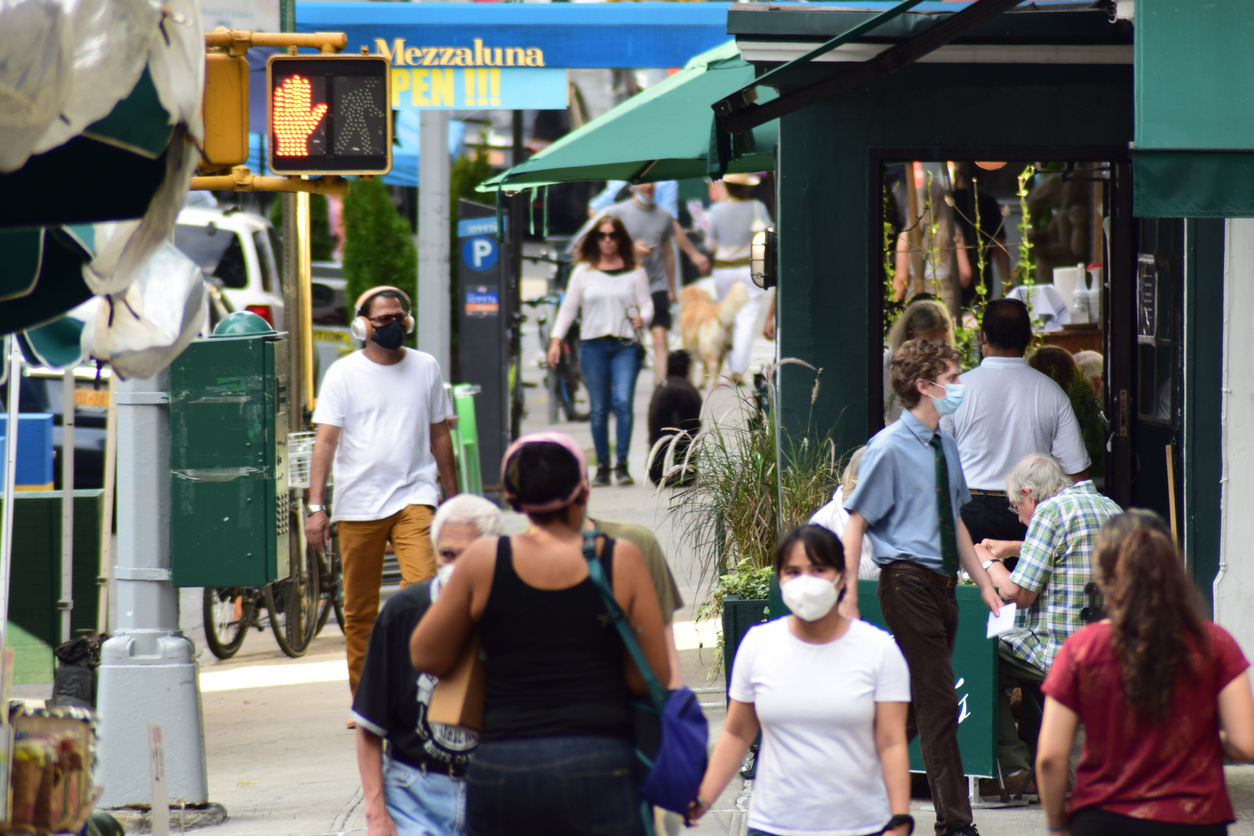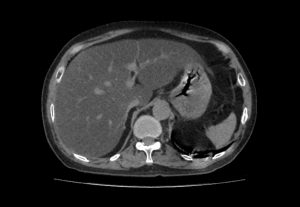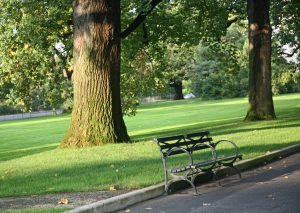In an interview with The New York Times, CUNY SPH Dean Ayman El-Mohandes discussed the results of our ongoing COVID-19 tracking survey and New Yorkers’ reluctance to return to normalcy.
As Summer Wanes in N.Y.C., Anxiety Rises Over What Fall May Bring
The coronavirus has retreated in New York, but the rituals of September are disrupted, and a sense of foreboding remains about a possible second wave.
By
Aug. 26, 2020
In March and April, as ambulances raced through neighborhoods and refrigerated trucks sat humming behind hospitals overwhelmed by the pandemic’s dead, summer seemed a distant fantasy. Then it arrived as promised: The city unveiled in a series of phases that brought its streets back to something closer to life.
The coronavirus infections dropped, the curve flattened, dinner and drinks were served beneath the stars, and friends reunited in parks and on beaches as if home from a war.
But throughout the city, between the elbow bumps and happy hours, lurked a deep and intense anxiety over what might lie ahead, as summer gave way to autumn and a new rash of frightening unknowns.
September, always both an ending and a beginning, seems this year almost impossibly fraught, its usual rhythms — back to school, back to work — upended.
In interviews, New Yorkers, even as they leaned into summer activities and visited parks and cafes, shared a common foreboding that looked beyond the virus itself. Schools, the economy, crime, food, shelter, travel and access to family, planning a vacation — nothing feels like a given in these waning days of August.
“I don’t think it’s going to get better,” said Angel Vasquez, 39, a data processor, visiting Bush Terminal Piers Park in Brooklyn with his three young daughters. “I think it’s going to get worse.”
On most days, New York’s rate of infection hovers below 1 percent of the roughly 25,000 tests performed each day in the city. Similarly, the number of positive tests statewide was 0.66 percent as of Monday. The numbers are far lower than most other states, where new cases are setting records and still rising.
But New York’s success has not dampened fears of a second wave arriving after cooler temperatures force people back indoors or when schools that have been empty since March finally reopen.
At a playground at Hunter’s Point South Park in Long Island City in mid-August, Kyie Wallace pointed out a phenomenon that other parents have noticed in their own homes: Neither of his two children, away from classmates for months, has fallen ill since March — not a sniffle. “Unprecedented in my house,” he said.
Now, he views September as a threat. “My kids are going to come back and get something,” he said. “The numbers will go back.”
But the alternative, returning to remote learning and its kitchen-table stalemates and compromises, brings its own dread.
Stephen Banci, 55, who owns a construction business, hopes the upcoming schedule at his 5-year-old daughter’s school — five days in the classroom every three weeks — will at least give her some interaction with other children. But he said he was frustrated by the uncertainty from officials and all the questions without answers this late in the summer.
“I’m not sleeping as well as I’d like to,” Mr. Banci said. “I think at the end of the day, I realized how stressed I am, so it erupts at night when you take a deep breath and realize how much it is.”
Visitors and newcomers to the city quickly pick up on the anxiety.
“Honestly, everything worries me,” said Martha Vazquez, 38, sitting with her 18-year-old daughter, Lizbeth Perez, at Washington Square Park on what should have been a joyous day. Ms. Vazquez, who cleans construction sites, and her husband, who works in landscaping and construction, had saved enough to see Lizbeth enrolled at N.Y.U. Ms. Vazquez and her husband, who live in Washington State, were dropping her off at the school but felt overwhelmed.
“Everything is not OK,” she said. “I worry about what I’ll do if something happens to her, if she were to get sick.”
The coming fall has called into question some New Yorkers’ decisions in the early days of the pandemic to stick it out at home. Now, even as the threat of illness has diminished, the lure of the suburbs grows. Seeing others depart brings unsettling questions: Are we doing the right thing by staying? This will all pass, right?
“It is so difficult to have your own space in this city,” said Ashley Shoulders, 30, as her 4-year-old daughter played nearby in Central Park. “You can be as responsible as you can possibly be, but once you step foot outside of your door there are a lot of people stacked on top of each other in New York City.”
She’d been considering moving for a while, but now it seems more urgent. “Maybe Westchester, maybe New Jersey,” she said.
Greg Kushnick, a psychologist in Manhattan, said he has seen a mounting gloom among his patients. “New Yorkers who weren’t panicking or depressed in the first months are now experiencing more depression and disbelief in terms of how long this is going to go,” he said. “There is an impending-doom feeling.”
New Yorkers, while less anxious about contracting the virus, have at the same time shown a reluctance to return to activities as mundane as a regular visit to the doctor, according to ongoing surveys by the City University of New York Graduate School of Public Health and Health Policy.
“The level of anxiety is increasing, not decreasing,” said Dr. Ayman El-Mohandes, the dean of the school. “People are squeamish.”
The surveys found consistent unease about losing a job or, for those who already have, finding a new one or returning to work after being furloughed.
“People who live in New York are enchanted by the city and are attached to a way of living,” he said. “Many of them are drawn to New York because of opportunity, and if they don’t see that to be a fact, then it’s a problem.
It’s a problem that Darren Liddell, 33, a financial coach, sees around his neighborhood in Sunset Park, Brooklyn, where recently the mayor announced an uptick of cases had occurred. “In some ways it’s more stressful than ever, thinking about what life will look like,” he said. “A friend asked me yesterday, ‘What’s the future of work?’ I have no idea.”
That question was not a theoretical one for Manuela Flores, 28, and her husband, Oscar Flores, 28, as they sat with their 8-month-old son, Lucas, in Sunset Park. Both had lost their jobs as servers in the same Manhattan restaurant.
“I’ve seen a bunch of businesses fail,” Mr. Flores said. “I’m concerned when I’m going to go back to work, especially if they’re not going to give me assistance.”
He said he wished there was a finish line, no matter how far-off. “There’s no set time. If there was a set date, you could say, ‘OK,’ and prepare for that. But there isn’t.”
Nonetheless, experts said it was vital that people take steps to restore a feeling of control — however minimal — over their daily lives and, to some extent, their future.
“We kind of know the lay of the land,” Mr. Kushnick, the psychologist, said. “It’s a matter of whether you’re going to adjust, or not adjust and suffer.”
The CUNY surveys, last conducted in late June, will resume during the first week in September with an eye toward the future.
“We are going to try to look for action items, like ‘What am I doing about it?’” Dr. El-Mohandes, the CUNY dean, said. “In the first 16 weeks this was like a natural disaster, like an earthquake or tsunami. It didn’t seem fair to ask, ‘Well, what are you doing about this?’ But by September, people are starting to make decisions for themselves or their families. ‘Am I going to move out? Am I going to stay? What am I going to do about this?’”
Many of those answers, great and small, are already visible.
In Long Island City, where 18-year-old Ferdinand Stirling greeted the closing of his high school with approval — “It was lit,” he said — the pause allowed him to make music and “grow so much as a musician in the past few months,” he said. Likewise, in nearby Sunnyside, Gero Eaton, 30, has made some money selling his kaleidoscopic splatter paintings, which he displayed on the streets outside his studio.
“I look at it as a way to keep me sane,” he said.
In Sunset Park, a group of friends beat back the worries of the day by stringing a volleyball net across 51st Street and grabbing a ball.
“It’s a way to get out the stress,” said Wilson Idrouo, 40.
They have one firm rule: Unless you’re talking about one of the cold bottles of beer in the case nearby, there will be no mention of the word “corona.”
In Greenwich Village, Willa Kiritz, 72, and her husband, Anthony Blanche, 88, bring their lifetimes of experience to the city’s current troubles.
“Just wear the bloody masks and let’s get on with this,” Ms. Kiritz said. The empty streets and shuttered businesses alarm her, calling to mind tough times in the 1980s. But she and her husband ventured outside to a restaurant “the minute” they reopened, she said.
Mr. Blanche deployed the New Yorker’s sturdy what-are-you-gonna-do shrug. “I don’t think I’m too worried,” he said. “I know I’m not going to get out of here alive.”



